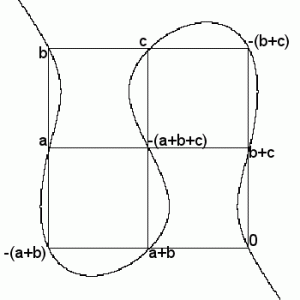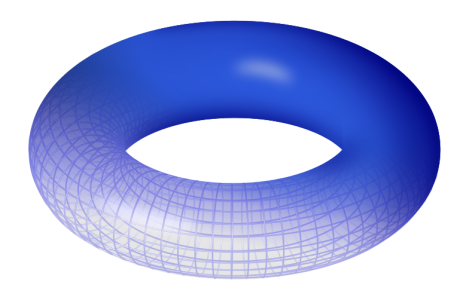As part of our series of research articles deliberately focusing on the rigour and intricacies of mathematics, we look at Oxford Mathematician Minyhong Kim's research in to the relationship between number theory and topology. Minhyong Kim is Professor of Number Theory here in Oxford and Fellow of Merton College.
It is probably well-known that number theory is the source of some of the oldest and most accessible questions in mathematics:
Which regular polygons can be constructed using only a straight-edge and a compass?
How are the primes distributed in the large?
What are the integral solutions of the equation $x^n+y^n=z^n$?
Is there an algorithm to generate the rational solutions to rational cubic equations of the form $y^2=x^3+ax+b$?
Many people with mathematical inclinations will be drawn to the natural simplicity of these queries, perhaps early on in life, and will gradually expand the reservoir of their knowledge in the hope of approaching a solution, progressing from the easy to the hard cases. Mathematics as a whole has had a historical relationship to number theory parallel to the personal development of a mathematician. Over millennia, logic, algebra, analysis, and geometry have all been employed in the service of number theory, the tools of the trade often becoming more powerful or refined in response to the demands of arithmetic problems. In our times, it's difficult to find a single area of mathematics, from the elementary to the most conceptually sophisticated, which is not used in some serious way in number theory. Number theory has acquired thereby the status of a quite general testing ground for conceptual progress: a mysterious and abstract theory can prove its worth and its connection to mathematical reality by its applicability to concrete problems of number theory. The tendency to generate natural problems has enabled number theory to reconstitute itself as a pure laboratory for the power of ideas.
Since the 1960s, a major instance of this interaction has been that between topology and number theory. Topologists are adept at coming up with extremely abstruse notions of shape and space, such as a topos, a simplicial set, or a spectrum. Each of these in turn have had fruitful number-theoretic incarnations in the study of equations over finite fields, quadratic forms, and in the Galois theory of $p$-adic fields. Minhyong Kim's research continues the exploration of the relationship between topology and number theory, most actively with ideas from homotopy theory. As an elementary example, consider a set of paths $P(1 ,z)$ in the punctured complex plane from point $1$ to the point $z$. Surprisingly, there is a big difference in structure between the path spaces with $z$ transcendental and those with $z$ algebraic. More precisely, in the latter case, the homotopy classes of paths, suitably completed, admit an intricate symmetry group coming from Galois theory. Kim has been studying the classification of such hidden symmetry with a view to detecting rational or algebraic solutions to polynomial equations. For example, using only the Galois symmetries of the path spaces between solution points, he has been able to reprove the theorem, first proved by Faltings then vastly improved by Wiles, that the equation $$x^n+y^n=1$$ has only finitely many rational solutions when $n\geq 4$ (this is joint work with John Coates).
Most recently, in collaboration with many mathematicians and physicists from the US, Europe, and Asia, Kim is involved in a programme to develop the ideas of topological quantum field theory in the realm of number theory. The main mathematical impact of topological quantum field theory arises from the use of an integral over fields (in the sense of the physicist, not that of the algebraist) to measure the quantum correlation between points on a space, the winding of knots, or to define a numerical invariant of the space itself. The current project explores the application of this idea to primes and rings of integers in number fields (now in the sense of algebraists), where the role of the physical field is played by representations of arithmetic Galois groups. These representations themselves lie at the crossroads of the most important paths of investigation in present day number theory, such as the conjecture of Birch and Swinnerton-Dyer, the theory of zeta and L-functions, and the Langlands programme. One goal of this research is to understand their centrality from a point of view consistent with the intuition of geometry, topology, and physics.



